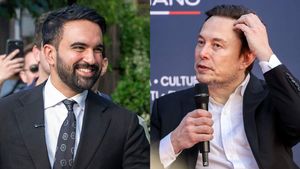Researchers at Oregon Health & Science University have advanced a technique that can turn a skin cell into an egg, signalling promise for same-sex couples looking to start families.
The advancements, recently published in Science Advances, have furthered understanding of in vitro gametogenesis (IVG), while also shortening the lengthy process.
IVG is the process of developing gametes — reproductive cells like sperm or eggs — outside of the body. It is time-intensive, with researchers having to spend months at a time reprogramming skin cells into induced pluripotent stem cells (iPSCs). The stem cells, which can adapt to other types of cells and produce more, then become eggs or sperm cells.
The new technique used by OHSU researchers greatly shortens the process. It involves replacing the nucleus of a donated egg with that of a skin cell. The implanted cell discards half of its chromosomes as it divides, resulting in a "haploid" egg — one with a single set of chromosomes. Researchers can then fertilize the egg with sperm through in vitro fertilization (IVF), creating an embryo. This process is similar to cloning, and was used in creating the first cloned mammal, Dolly the Sheep.
Paula Amato, the report's co-author and a professor of obstetrics and gynecology at OSHU, said in a statement that with the new technique, "we’re skipping that whole step of cell reprogramming."
“The advantage of our technique is that it avoids the long culture time it takes to reprogram the cell," she explained. "Over several months, a lot of harmful genetic and epigenetic changes can happen.”
This technique, though years away from being ready for clinical use, could assist women who past reproductive age or those who are infertile. It could also be used for same-sex couples, giving them the possibility of having children that are genetically related to both parents.
Senior author Shoukhrat Mitalipov, director of the OHSU Center for Embryonic Cell and Gene Therapy, said that "the goal is to produce eggs for patients who don’t have their own eggs." However, while the advancements are promising, Amato added that there's "still a lot of work that needs to be done."
“This gives us a lot of insight,” she continued. “But there is still a lot of work that needs to be done to understand how these chromosomes pair and how they faithfully divide to actually reproduce what happens in nature.”





































































Charlie Kirk DID say stoning gay people was the 'perfect law' — and these other heinous quotes